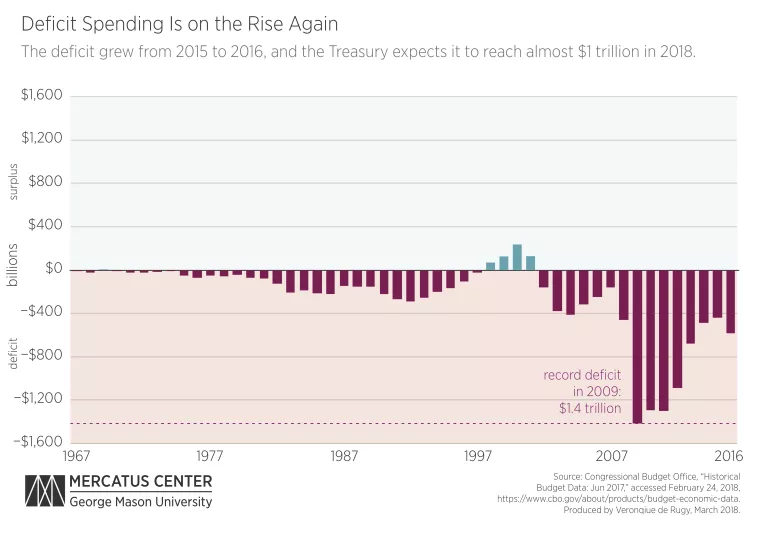- | Government Spending Government Spending
- | Data Visualizations Data Visualizations
- |
Restraining Spending Is Key to Balancing the Federal Budget
These long-term trends show that restraining spending is the key to balancing the budget.
Federal deficits are growing again. The deficit peaked in 2009 to set a new record of $1.4 trillion, a level that was more than three times that of the preceding year. Deficits returned to prerecession levels for only two years, 2014–2015. Since 2015, deficits have been rising again, with the Treasury predicting a deficit of nearly $1 trillion this year.



